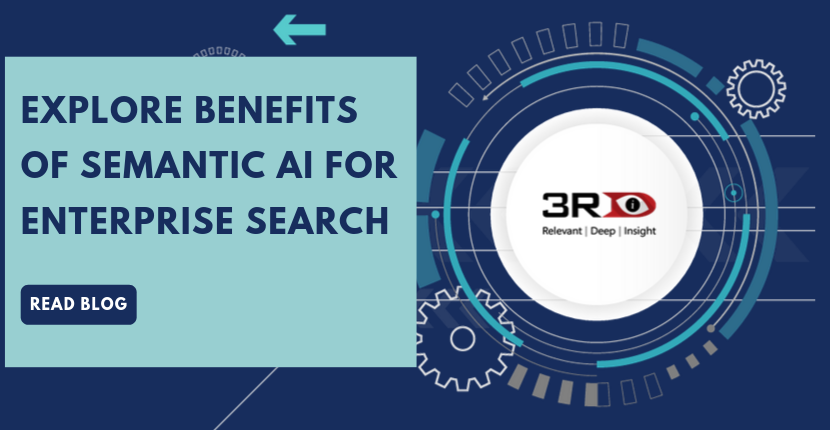
AI Driven Semantic Search for Enterprise Data Challenges
Artificial intelligence (AI) has emerged as a key technology concept that is having its effect in every other domain and industry. It is the technology that enables machines to think, reason and even take decisions like humans do. As interesting as it may sound, AI holds a world of possibilities and has the potential to change the way we look at and interact with machines. AI technology holds the key to innovation and can be used to develop game changing applications.
In fact, a study by Mc.Kinsey says that globally, the investment into AI technologies has reached close to 50 billion USD, and this is only going to rise with the growing demand for smart devices and applications.
Talking about semantic technology, we know that it is a technology that has, in its own way, revolutionized the world of search in general, and enterprise search in particular. Today, an advanced enterprise search tool like 3RDi Search is powered by semantic search technology. What makes semantic search crucial for effective analysis and management of enterprise data is the fact that the lion's share of the organizational data is unstructured. This implies that this data cannot be analyzed using the conventional methods. Also, it is impossible to derive hidden insights from unstructured data using keyword based tools, as the data is not optimized.
Now, what happens when AI meets Semantic technology? We get Semantic AI.
Semantic AI is nothing but semantic search that is driven by AI and it offers an entire range of advantages and gets implemented through the entire data lifecycle. Given below are the five key benefits of semantic AI for enterprises.
1] Data as a Service
With Semantic AI, it is possible to link data to serve as a data platform to cater to the enterprise as a whole. This saves time and efforts required to generate data sets from every application or use case. In fact, semantic data lakes can serve as the source for high quality data, which can then be linked with internal enterprise data, as well as the data sourced from various platforms. This data can be effectively used to train machines for machine learning
2] Boost in Data Quality
When AI meets semantic search, the data or insights derived will be of the highest accuracy and relevancy, which can be useful in various projects and in decision making for business growth. Also, the classification feature of semantics is enhanced by the AI, which means the entities in the data can be more completely sorted as required. This only enhances the usability of the data.
3] Offers the Best of Both Worlds
A combination of methods derived from symbolic and statistical AI, Semantic AI provides an opportunity for everyone involved to select from various methods in order to meet a goal. With AI and semantics together, there are a lot of approaches to choose from, which only gives more options to everyone in charge of the project. Also, any concept from semantic technology can only be enhanced with AI. This is also referred to as the hybrid approach, which offers the best of both worlds.
4] Structured Data Meets Unstructured Data
What most enterprise search tools are involved in today, is analyzing text and unstructured data individually. However, semantic AI has the potential to change it, as it can be used to combine insights from unstructured data, with that from structured data, and can be together used for improved decision making. With semantic AI, data in multiple formats can be made available together for further analysis. This helps organizations build a more inclusive database.
5] Possibility of Self-Optimizing Machines
Semantic AI is the technology that has the potential to help build self-optimizing machines. A self-optimizing machine is one that optimizes itself. Machine learning can be instrumental in building knowledge graphs, which in turn adds to the "learning" experience of the machines. This way, semantics and AI can walk hand in hand to build the next generation of enterprise search tools that would not require humans to provide them with words to "learn".
Conclusion:
Enterprises today are facing the challenge to acquire meaningful data that can be easily interpreted for insights, and semantic AI provides the technology required to make this possible right from the beginning of the data lifecycle. Enterprise search
What makes semantic AI is more than any other ‘machine learning algorithm’ as it combines the advantages of AI with semantics, to open a world of opportunities in data analysis.